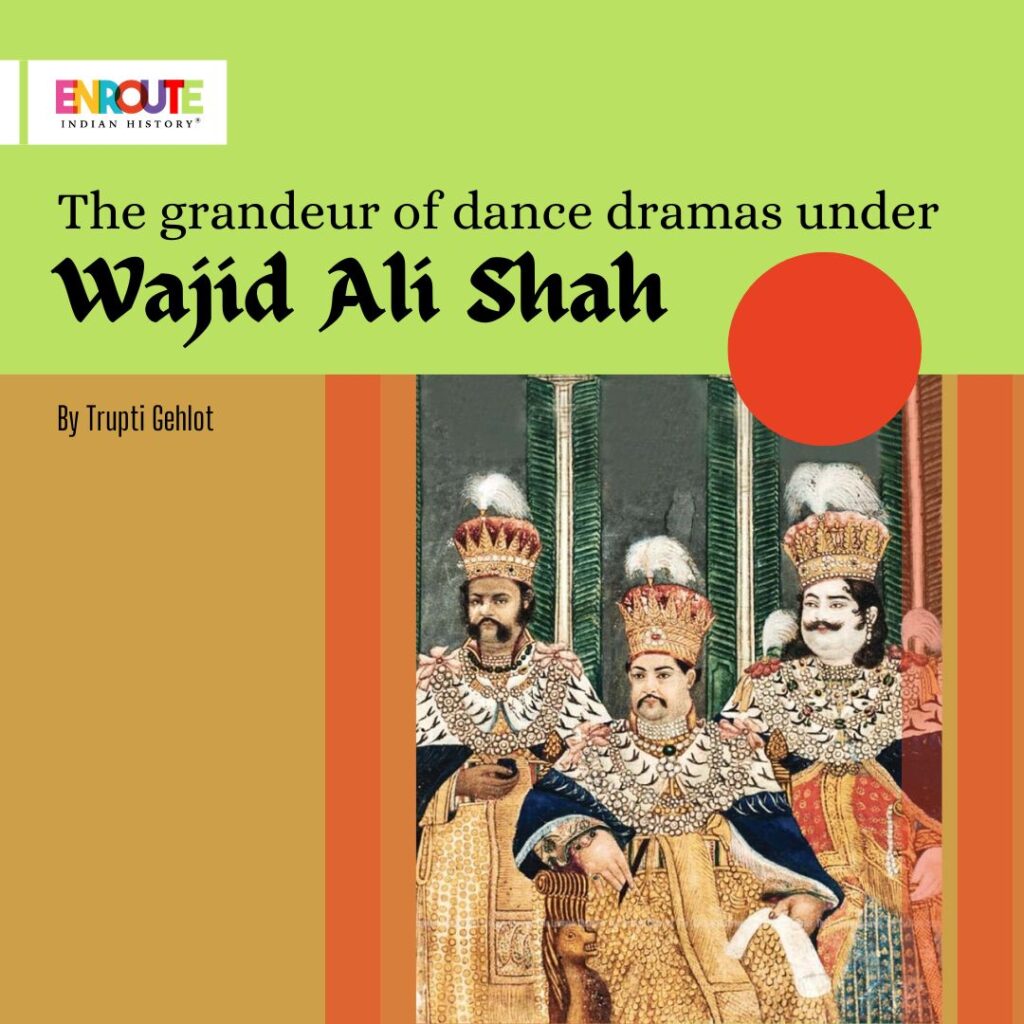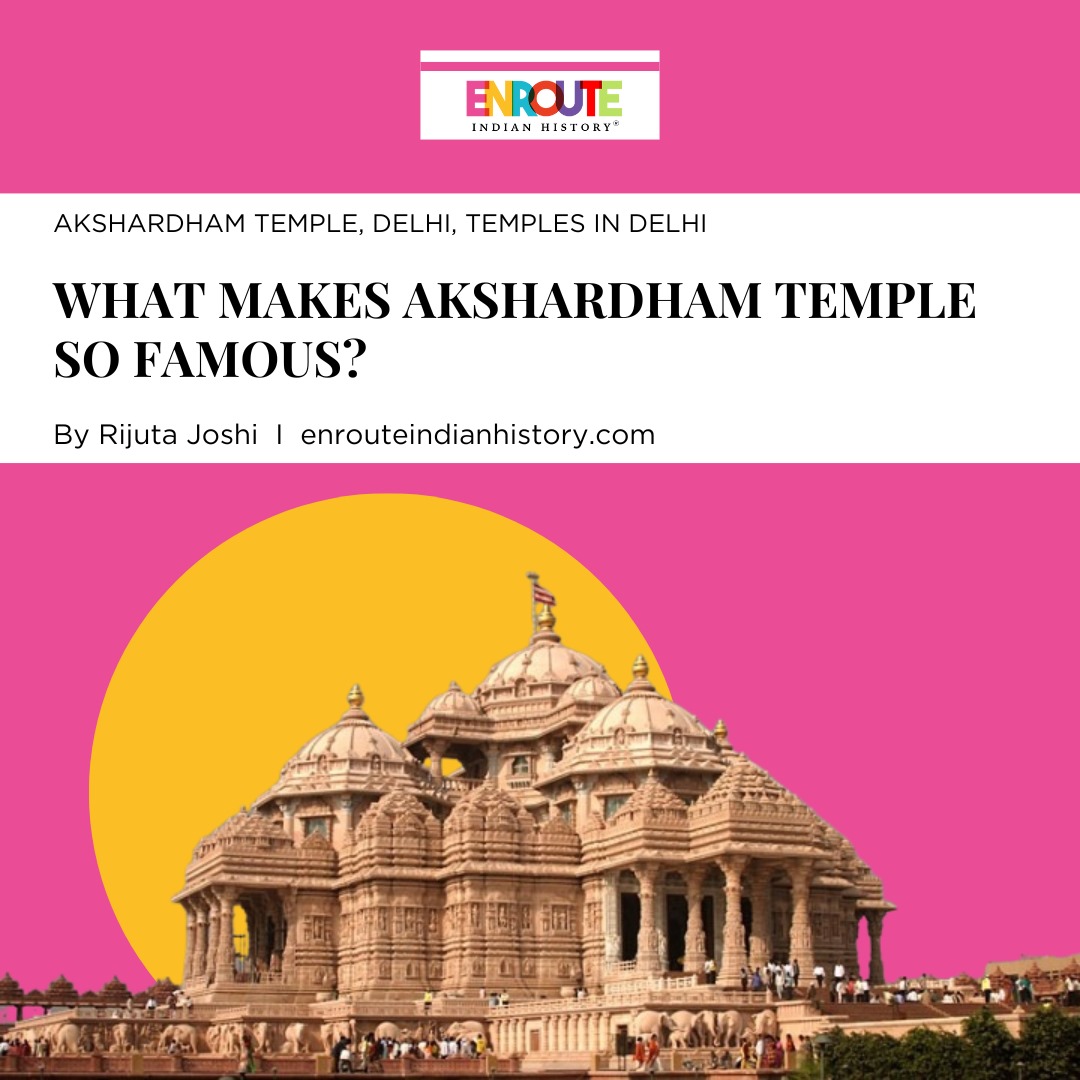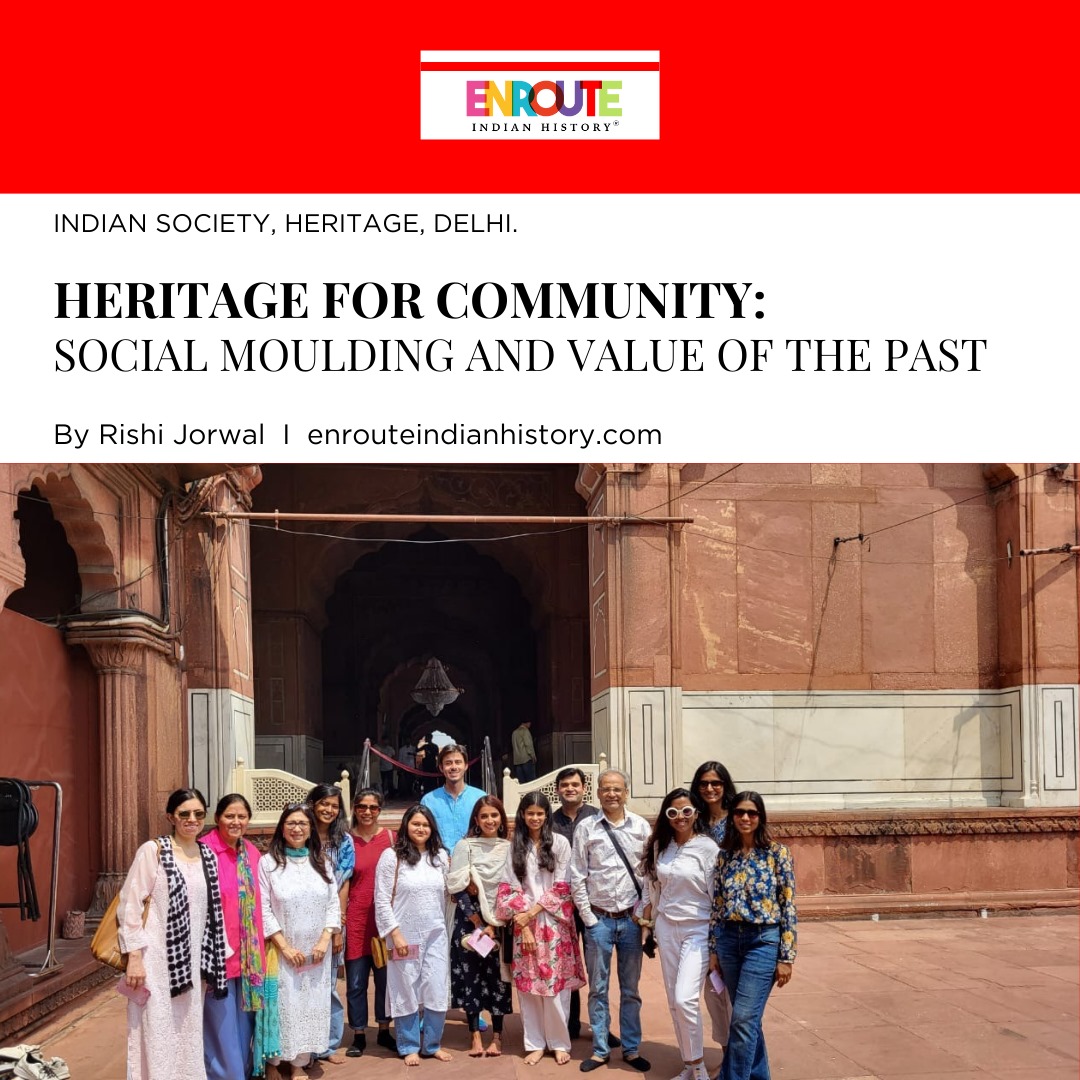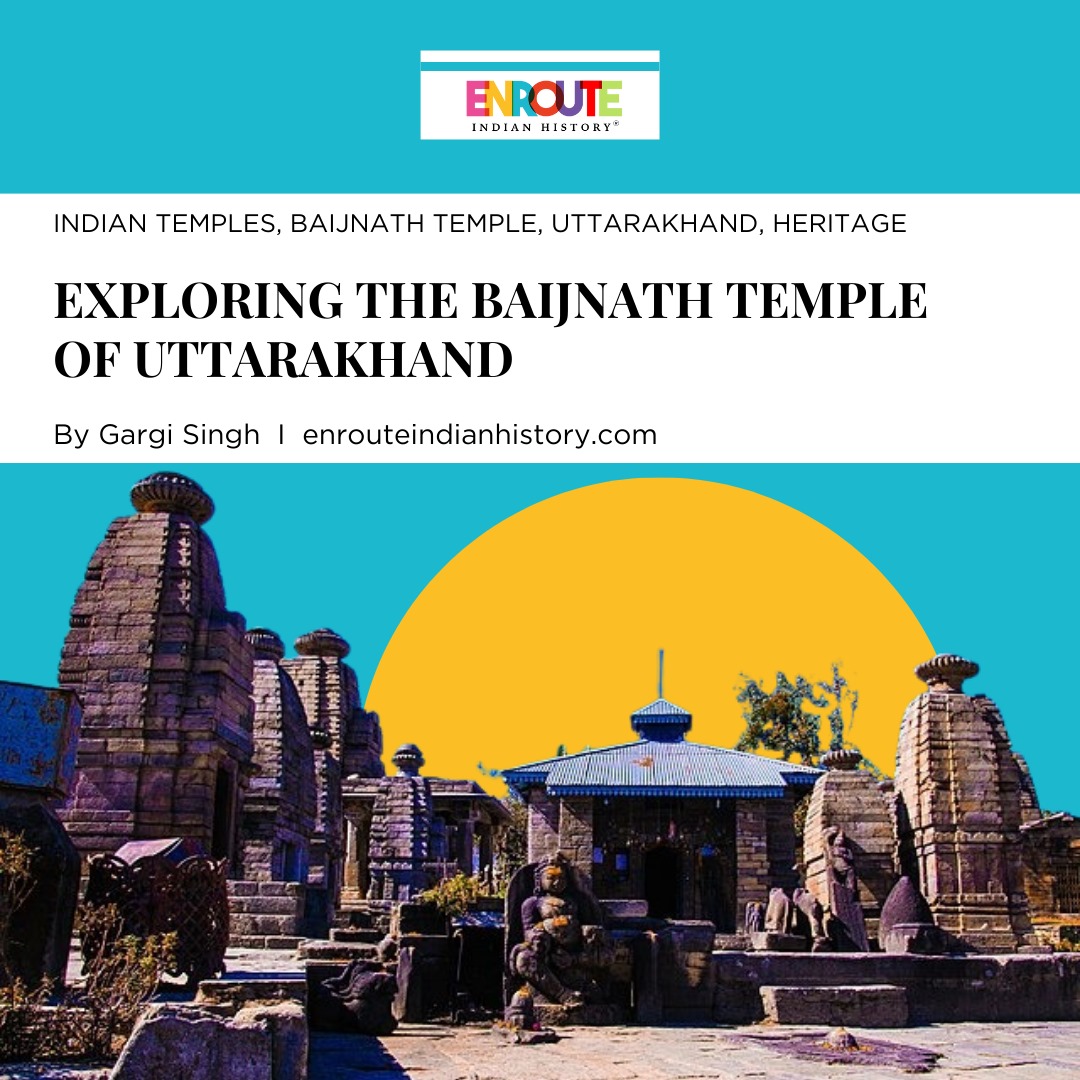Dancing Monarch: Wajid Ali Khan’s Tale of Art and Passion
- enrouteI
- July 6, 2023

In a world where imagination reigns supreme, where passion and artistry collide, dance dramas emerge as the embodiment of sheer brilliance. With each graceful movement, a symphony of storytelling unfolds, blending intricate choreography with captivating narratives. From ancient myths to contemporary tales, the stage becomes a canvas where dancers breathe life into characters, painting a vivid tapestry of human experiences.
In this cultural world of dance dramas, one very celebrated name is the last ruler of Awadh Wajid Ali Shah. Born on July 3, 1822, Wajid Ali was the eleventh and final King of Awadh. His reign spanned a period of nine years, from February 1847 to February 1856. He ascended the throne of Awadh during a time when the kingdom had already witnessed a significant decline. The British had annexed a considerable portion of the kingdom through the 1801 treaty, subjecting Awadh to financial strain by imposing a costly British-controlled army and frequent demands for loans.
Despite adverse circumstances, he possessed numerous qualities that would have made him a capable ruler. Alongside his generous, kind, and compassionate nature towards his subjects, he also exemplified remarkable magnanimity and support for the Fine Arts. Through his unwavering dedication to painting, architecture, poetry, music, and dance dramas, he not only realised his profound passion for these artistic expressions but also played a pivotal role in their widespread acceptance and popularity. Wajid Ali Shah, in addition to providing patronage to dancers, found great pleasure in dancing himself.
In Wajid Ali Shah’s childhood, astrologers predicted his future as a yogi. In response, his parents adopted a unique tradition: dressing him up as a yogi on each birthday to counteract the influence of malevolent stars. This tradition persisted throughout his early years. On his birthday celebrations, the Nawab would dramatically transform into a yogi, donning saffron robes, adorning his face and body with a mixture of ash and pearls, wearing pearl necklaces around his neck, and clutching a rosary in his hand. Accompanied by two of his Paris from his renowned Parikhana, an abode where numerous talented and beautiful girls were instructed in the arts of music and dance by expert teachers, dressed as jogans, he would make a grand entrance into the court, exuding an air of pomp and splendour. This ritual evolved into a magnificent spectacle called Jogia Jashan, eventually transforming into a vibrant festival or Mela/Jalsa, where citizens of Lucknow, regardless of their caste or creed, were encouraged to participate by dressing as yogis. Nawab Iqtidar ud daula, the uncle of Wajid Ali Shah, vividly portrayed the grandeur of these magnificent Jalsas in his book Tarikh-e-Iqtidariya, where he himself actively engaged in these festivities.
Nawab Wajid Ali also exhibited remarkable literary talent by composing three exquisite romantic poems in the form of masnavis. These poems, namely Darya-e-Ta’shuq, Afsanaye-Ishq, and Behr-e-Ulfat, showcased his eloquence and artistic prowess. As he matured in his role as a ruler, Wajid Ali revisited these masnavis, refining and enhancing them further. Not content with mere written words, he also ventured into the realm of Urdu theatre by adapting his masnavis into dramatic representations.
Wajid Ali Shah’s artistic journey reached new heights when the magnificent Qaisarbagh Baradari became his cherished stage, setting the scene for his grandest performances. Inspired by his deep passion for the arts, he embarked on a quest to master the captivating art of Kathak, seeking guidance from revered gurus like Guru Thakur Prasad and Durga Prasad. Guided by their expertise, Wajid Ali Shah not only became a skilled Kathak dancer but also ventured into uncharted territories of creativity. With an innovative spirit, Wajid Ali Shah pioneered two distinct dance forms, Raas and Rahas, each an exquisite manifestation of his unique artistic vision. These dance forms breathed new life into the world of movement, infusing it with vibrant energy and enriching the cultural heritage of the era.
Raas, an exquisite dance form, unfolded a divine narrative where a multitude of gopis, and village maids, gracefully swayed alongside Krishna, a revered Hindu deity. This captivating dance was a profoundly religious expression, imbued with sacred meaning, and commenced with the enchanting melodies of Dhrupad, a classical style of raga.
According to legend, the mesmerizing raaslila unfolded on a mystical night when the gopis of Vrindavana, upon hearing the enchanting strains of Krishna’s flute, surreptitiously ventured away from their households and loved ones. Guided by an irresistible call, they converged in the enchanting forest to partake in a timeless dance with Krishna. Such was the divine allure of the moment that Krishna supernaturally extended the night to the length of one kalpa, a Hindu unit of time spanning approximately 4.32 billion years. This celestial extension allowed the gopis to revel in the euphoria of the raaslila, dancing in harmony with their beloved deity throughout this transcendent temporal stretch.
Rahas, in contrast, unfolded as a grand dance drama, combining elements of dance, acting, and music to create a captivating spectacle with its diverse scenes. Rooted in the graceful movements of Kathak, Rahas showcased Wajid Ali Shah himself dancing alongside the talented women of his court. His book, titled Bani, delved into the world of Rahas, documenting 36 distinct types of performances, all masterfully crafted in the Kathak style. Each Rahas had its vibrant names, such as Mor-Chhatr, Ghunghat, Salami, Mor Pankhi, and Mujra. The book meticulously detailed the intricacies of costumes, jewellery, and stagecraft, providing exhaustive insights into every aspect of the production.
These elaborate Rahas were prepared at tremendous expense, costing several lakhs (hundreds of thousands) of rupees. The popularity of Rahas soared, attracting audiences to the grand Kaisarbagh-Rahas Manzil, widely believed to be one of the earliest Hindustani Theatre Halls. Wajid Ali Shah’s groundbreaking contributions earned him recognition as “the first playwright of Hindustani theatre,” exemplified by his trailblazing production, “Radha Kanhaiyya Ka Qissa,” which brought to life the enchanting characters of Goddess Radha, Lord Krishna, a multitude of sakhis, and the comical Vidushaka-like character named “Ramchera.” The profound influence of Wajid Ali Shah’s dance dramas can be seen in Amanat’s Inder Sabha, which drew inspiration from the captivating legacy of Nawab Wajid Ali Shah, who not only wrote and produced these spectacles but also staged them, leaving an indelible mark on the annals of Hindustani theatre.
The era of Wajid Ali Shah, the last ruler of Awadh, stands as a golden chapter in the history of dance dramas. His unwavering dedication to the arts, his pioneering spirit, and his remarkable contributions have left an enduring legacy. Through his patronage, he nurtured and elevated the world of dance dramas, infusing them with passion, creativity, and divine narratives. His grand spectacles, such as Raas and Rahas, continue to enchant audiences, serving as a testament to his artistic vision. Wajid Ali Shah’s reign marked a pinnacle in the cultural landscape, where imagination and artistry converged to create mesmerizing experiences that still resonate today.
References –
Hasan Rizvi, S. M. The Royal Stage of Lucknow. https://doi.org/23348225
Hasan Rizavi, S. M. On “Urdu Drama Aur Stage”. https://doi.org/23329668
Chakravorty, P. (2006). Dancing into Modernity: Multiple Narratives of India’s Kathak Dance. Dance Research Journal, 38(1), 115-136. https://doi.org/20444667
Movie – Shatranj Ke Khiladi Satyajit Ray
- April 18, 2024
- 5 Min Read
- April 18, 2024
- 7 Min Read


























